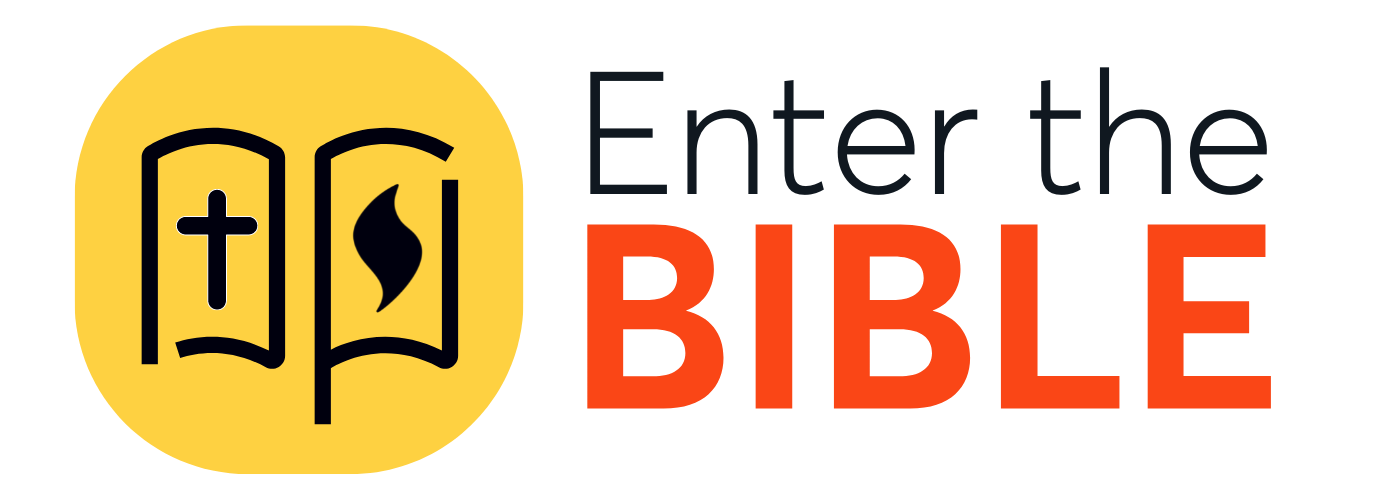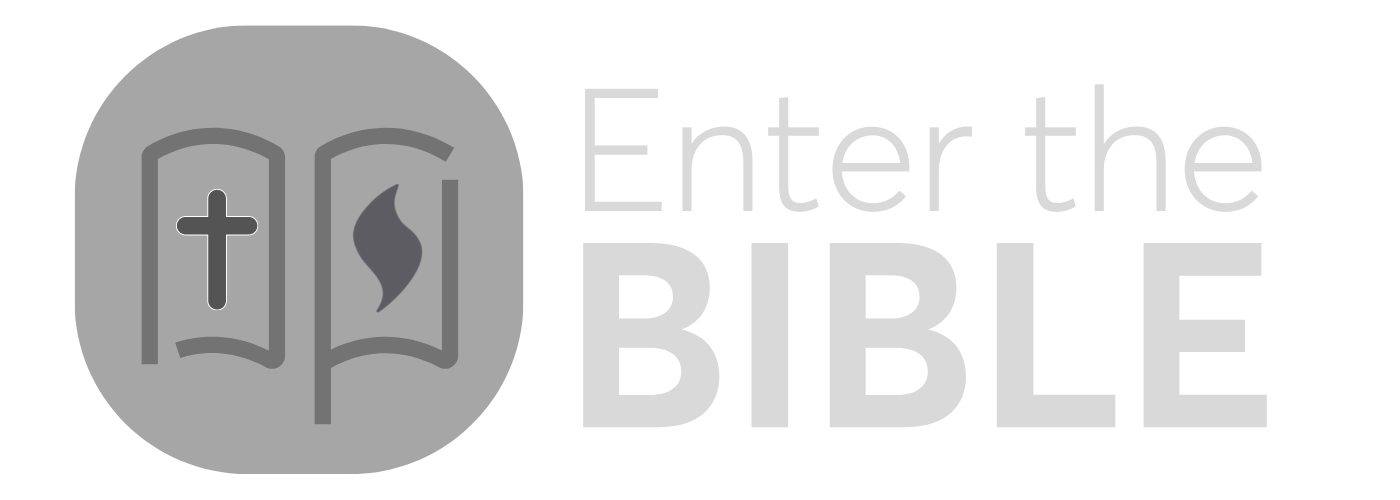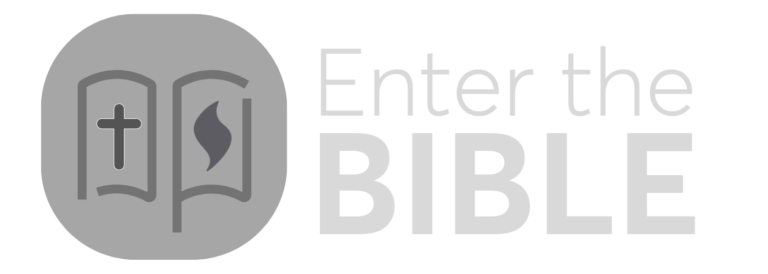Introductory Issues in Psalms
Alphabetical or acrosticAn acrostic is a play on words or a word game in which the first letter of each line in a document spells out another message. One biblical example of an acrostic is Psalm 119 in which the consecutive subsections of the psalm feature the… More psalms
Some psalms have an alphabetical acrostic pattern in which each verse begins with a subsequent letter of the Hebrew alphabet–including, as it were, everything “from A to Z” (or alef to tav, in Hebrew). The simplest of these have twenty-two verses, each beginning in order with a different letter (Psalms 25; 34; 145–though the present manuscript of 145 lacks a verse for “n” [Hebrew nun]). The fact that Psalms 9 and 10 together form an acrostic is a strong indication that they are to be read as a unit (as they are in the Septuagint). The lengthy Psalm 119 is a complex acrostic in which each of the twenty-two stanzas has eight lines, each of which begins with the same Hebrew letter, the stanzas following in Hebrew alphabetical order (thus, the 176 verses: eight times twenty-two). This intricate structure has a kind of mathematical precision that seems to match the psalmist’s delight in God’s decrees (Psalm 119:14). The use of all the letters of the alphabet is one way to point to the fact that “all [God’s] commandments are right” (v. 172).
Dance
Three psalms make reference to dance (Psalms 30:11; 149:3; 150:4), the latter two explicitly calling for dance as an element of worship. Israel danced for joy both in victory (Exodus 15:20) and in the presence of God (2 Samuel 6:5). When God makes all things new, people will dance (Jeremiah 31:4, 13). Israel’s worship involved all the senses. Just as all creationCreation, in biblical terms, is the universe as we know or perceive it. Genesis says that in the beginning God created the heavens and the earth. In the book of Revelation (which speaks of end times) the author declares that God created all things and… More claps and sings in praise of God (PsalmA psalm is a song of praise. In the Old Testament 150 psalms comprise the psalter, although some of the psalms are laments and thanksgivings. In the New Testament early Christians gathered to sing psalms and hymns and spiritual songs. More 98:8; 148), so also God’s people join in that song and dance (Psalms 149 and 150).
David’s life
Several of the psalm headings make explicit reference to an event in the life of David (3; 7; 18; 34; 51; 52; 54; 56; 57; 59; 60; 63; 142). The best known of these is Psalm 51’s association with David’s sin with Bathsheba. These headings were no doubt later additions, but they serve to link the Psalter to the life of David and the history of the monarchy. Worship is not dissociated from the world for Israel. The link with David builds on the tradition’s memory of David as singer and musician (1 Samuel 16:16-23; 1 Chronicles 16:7, 37-43; Sirach 47:8-10). More, it reads the psalms as prayers of God’s anointed king, the “messiah,” thus supporting a messianic orientation of the PsalterThe psalter is a volume containing the book of Psalms (see Psalm). In the early Middle Ages psalters were popular and contained – in addition to the psalms – calendars, litanies of saints, and other devotional texts. More.
Doxologies
A doxology is an expression of praise, usually related to worship. The first four books of the Psalter are marked at the end by a brief doxology. Although now incorporated into the final psalm of the book (41:13; 72:18-19; 89:52; 106:48), these are actually liturgical closings for the book itself, not part of a particular psalm. Book V closes with a longer doxological unit (Psalms 146-150), those five psalms perhaps matching the five books of the Psalter. Psalm 150 is entirely a call to praise and serves to close both Book V and the whole book of Psalms.
The Five Books
The Psalter is now divided into five books, each ending with a doxology or utterance of praise. Most students understand this to correspond to the five books of Moses (the TorahThe Torah is the law of Moses, also known as the first five books of the Bible. To many the Torah is a combination of history, theology, and a legal or ritual guide. More or PentateuchThe Pentateuch is a Christian term the first five books of the Old Testament. These books contain stories of Israel’s early history, God’s covenants, and many laws such as the Ten Commandments). More). An early Jewish commentary (MidrashMidrash in Judaism refers to methods of interpretation or exegesis. Midrashic exegesis is intended to derive a deeper meaning from a text. More Tehillim) says, “As Moses gave five books of laws to Israel, so David gave five books of Psalms to Israel.” Some modern readers have used the analogy of the sermon hymn: the Old Testament has five books of hymns to match its primary five books of sermons (Genesis through Deuteronomy). Some recent scholarship has suggested that the content of the five books of psalms relates to the main periods of Israel’s history, Books I-III (with many laments) corresponding to the failures that led to the destruction of Jerusalem in 587 B.C.E. and Books IV-V (with more hymns) proclaiming, in response, the hope of God’s reign.
Genres or types of psalms
Although each psalm is unique (except Psalm 53, which essentially duplicates Psalm 14), many fall into recognizable categories or types-sometimes according to literary form, sometimes according to similar content. Most prevalent are the psalms of lament in which pray-ers individually or communally cry to God for help in times of need (see the analysis of Psalm 6, below). Related to the laments are the psalms of trust in which the pray-er expresses confidence in God despite the present distress (see Psalm 23, below).There are also songs of thanksgiving that praise God for an experience of healing or deliverance (see Psalm 30, below). The hymns offer more general praise to God for the steadfast loveThe steadfast love (hesed) of God is the assurance of God’s loving kindness, faithfulness, and mercy. This assurance rings throughout the Old Testament, and is affirmed more than 120 times in the Psalms. In some hymns of praise the response of the people was likely… More shown both in creation and history (see Psalm 113 and 148, below). Several royal psalms speak of Israel’s earthly king (the “messiah” or “anointed one”) and lend a messianic orientation to the book (see Psalm 72, below). Some readers also identify wisdomWisdom encompasses the qualities of experience, knowledge, and good judgment. The Old Testament book of Proverbs, which sometimes invokes a Woman as the personification of Wisdom, is a collection of aphorisms and moral teachings. Along with other biblical passages, it teaches, “The fear of the… More or torah psalms that derive from Israel’s tradition of wisdom and teaching (see Psalms 19 and 73, below). Songs of ZionZion originally referred to a mountain near Jerusalem where David conquered a Jebusite stronghold. Later the term came to mean a number of other things like the Temple, Jerusalem, and even the Promised Land. More sing of the security to be found at Zion or Jerusalem because of the protecting presence of God (see Psalm 46, below). There are psalms of mixed type and psalms with particular liturgical elements, such as the procession of Psalm 68 and the entrance liturgies of Psalms 15 and 24 (see Psalm 24, below). The identification of types of psalms is one fruit of the scholarship called “form criticism” that seeks to understand the nature and use of different types of biblical literature.
Hallelujah
“Hallelujah” means “Praise the Lord!” “Halal” is the Hebrew verb to praise (“hallelu” is a plural imperative form), and “Jah” is a shortened form of God’s Hebrew name, Yahweh. This is one of the most characteristic terms in the Psalter, especially toward the latter part. It frequently begins and ends a particular psalm (including Psalms 146-150). The term functions grammatically as an imperative call to praise God, but it comes to be a shout of praise itself (Psalm 111:1; Revelation 19:6). Some linguists believe that the word may have derived from the repetitive ha-la-la-la-la sound of ululation, a typical cry of praise and joy among many peoples.
InclusioInclusio is a literary device in which a writer places similar material at the beginning and ending of a work or section of a work. For example, Mark’s gospel contains an inclusio in which Jesus is recognized (at his baptism and crucifixion) as God’s Son. More or inclusion
Many psalms begin and end with the same or very similar words. Psalm 8, for example, begins and ends with “O LORD, our Sovereign, how majestic is your name in all the earth!” Scholars call this repetition an inclusion or inclusio (the Latin form). It is one typical feature of Hebrew poetry, which serves, among other things, to provide “bookends” that tie together a poetic unit. The inclusio can surround an entire psalm or a portion of a psalm (for example, “blot out” in 51:1 and 9, marking the beginning and end of the first stanza of that psalm).
Melodies
Several psalm headings seem to many readers to indicate the melody to which the psalm would have been sung or played. Examples include “Muth-labben” or “Death of the Son” (Psalm 9), “The Deer of the Dawn” (Psalm 22), “Lilies” (Psalms 45 and 69), “The Dove on Far-off Terebinths” (Psalm 56), “Do Not Destroy” (Psalms 57-59); and “The Lily of the Covenant” (Psalm 60; see also Psalm 80). The titles are intriguing, the more so since we no longer know how they would have sounded. Essentially untranslatable terms like “Gittith” (for example, Psalm 8) and “Sheminith” (for example, Psalm 6) might also refer to tunes or instrumentation.
Parallelism
Psalms are poems, and the most characteristic feature of Hebrew poetry is parallelism. The poet says something once, and then says it again-or adds a second line that is clearly related to the first in a variety of possible ways: “Bless the Lord, O my soul, / and all that is within me, bless his holy name” (Psalm 103:1); “The Lord is my light and my salvation; whom shall I fear? / The Lord is the stronghold of my life; of whom shall I be afraid?” (Psalm 27:1). Parallelism has been called a rhyme of meaning, rather than the rhyme of sound that is characteristic of much English poetry. One line develops, enhances, and extends the thought of the other line. It might do this by using a similar grammatical construction (Psalm 103:10), rewording the thought in another way (Psalm 69:3), balancing a positive idea with a negative one (Psalm 37:21), or pairing commonly associated words-“people” in one line, for example, and “nations” in the next (Psalm 111:6), or “justice” and “righteousness” (Psalm 72:1). Parallelism may have served as a memory device or to enable musical or responsive use of the psalms in worship, but it is also part of the aesthetic beauty of the poetry and a contribution to its rhythmic effect on the hearer. The biblical word becomes richer and stronger through this repetition and extension. Parallelism can function not only within individual verses (or neighboring verses) but also over longer units of a text.
The penitential psalms
The early Christian church identified seven “penitential psalms” that were found to be particularly applicable for times of repentance and contrition (Psalms 6; 32; 38; 51; 102; 130; 143), especially during the season of Lent. Of the seven psalms, Psalm 51 contains the fullest confession of sin.
The psalms in Christian worship
The psalms-prayers and songs of the Jewish temple and synagogue-have been used in every generation of Christian worship as well, beginning already in the New Testament church (Ephesians 5:19). St. Augustine (354-430 C.E.) and other early teachers of the church speak frequently of their joy in singing the psalms. Psalms chosen for the day have served as essential elements of Sunday worship since early times, a practice carried over from Catholicism and Orthodoxy by many churches of the Reformation. Christian religious communities have regularly prayed and meditated upon psalms, often moving in order through the entire Psalter. Some Protestant traditions sang only psalms in worship rather than other hymns, translating or paraphrasing the psalms and setting them to melodies for congregational use. An example of this is William Kethe’s “All People That on Earth Do Dwell,” based on Psalm 100. Less direct psalm paraphrases have been the basis for many other hymns as well, including Martin Luther’s “A Mighty Fortress Is Our God” (from Psalm 46) and Isaac Watts’s “O God, Our Help in Ages Past” (Psalm 90). Throughout history, psalms have been used in private and group devotions as a primary resource for meditation and prayer.
Psalm pairs
Recent studies have noted that certain psalms seem deliberately to have been placed back to back, enhancing or playing off of one another in a variety of ways. Psalms 1 and 2, for example, work together to introduce the book (see below). Another obvious example is the combination of Psalms 103 and 104. Both begin and end with “Bless the Lord, O my soul,” which occurs nowhere else. The combination expands our basis for praising God by joining God’s works of mercy in Psalm 103 (“who forgives all your iniquity, and who heals all your diseases”-v. 3) with God’s wonderful work of creation in Psalm 104 (“You set the earth on its foundation, so that it shall never be shaken”-v. 5).
SelahThe actual meaning of Selah is elusive. It is found most often in some of the psalms (and also in the book of Habakkuk) and is possibly a liturgical or musical direction. The term is rarely used today. More (and other rubrics for worship)
Selah is perhaps the most prominent of the many liturgical or musical notations that accompany the psalms, because it occurs (74 times) within the psalms themselves rather than in the headings. It is almost certainly some kind of rubric or instruction for worship, but its actual meaning remains uncertain. The other most frequent worship note is “to the leader” (55 times in headings; for example, Psalm 4), which seems to indicate some kind of priestly leadership role. Psalm headings also sometimes make reference to the use of particular musical instruments (Psalms 4 and 5, for example). All of these liturgical references are the clearest evidence for the Psalter’s use as a kind of “hymnbook” for the worship of ancient Israel.
Setting in Life
One of the goals of the study of the types or categories of psalms (a method called “form criticism”), pioneered by the German scholar Hermann Gunkel early in the twentieth century, was to identify the “setting in life” of the various psalm types. Generally, this meant determining how the psalm was used in the worship life of Israel. While there has never been agreement about the worship setting for individual laments, Hannah’s story seems to suggest a place for bringing personal concerns before God in the presence of a priestA priest is a person who has the authority to perform religious rites. In New Testament times priests were responsible for daily offerings and sacrifices in the temple. More (1 Samuel 1:1-18). The Bible gives clearer directions for community lamentation in catastrophic times (1 Kings 8:33-40; Joel 2:1, 12-17). Songs of thanksgiving include sacrifices and bearing witness to the congregation of God’s personal deliverance of an individual (Psalm 66:13-20). The hymns of praise were thought to accompany the sacrifices and festival worship of all the people (Psalm 100). Royal psalms apparently were used to celebrate special events such as a coronation (Psalm 2) or a royal wedding (Psalm 45). The kingship of God is praised in the enthronement psalms (especially 93; 96-99), which may have been sung at the festivals to accompany the celebration of God’s great acts in Israel’s history. Other psalms reflect other liturgical practices, such as entrance into the templeThe Jerusalem temple, unlike the tabernacle, was a permanent structure, although (like the tabernacle) it was a place of worship and religious activity. On one occasion Jesus felt such activity was unacceptable and, as reported in all four Gospels, drove from the temple those engaged… More grounds (15; 24), a blessingBlessing is the asking for or the giving of God’s favor. Isaac was tricked into blessing Jacob instead of his firstborn Esau. At the Last Supper Jesus offered a blessing over bread and wine. To be blessed is to be favored by God. More ceremony (67), or thanksgiving for the harvest (65).
Songs of Ascents
The Songs of Ascents comprise one obvious collection within the Psalter (Psalms 120-134). Many understand these to be psalms that would have been used during the times of Israel’s “ascent” or “going up” to Jerusalem for festival worship (see Deuteronomy 16:16; Psalm 24:3). Though they are psalms of various types, they make frequent reference to the security found in Jerusalem and Zion (especially 122; 125; 134) and to the kind of protection needed by pilgrims on a long and possibly dangerous journey (especially Psalm 121). Because of this emphasis on God’s protection and the many references to the ordinary affairs of life (Psalms 127-128; 131; 133), these psalms still function well as prayers for believers in their own life journeys.
Tehillim
The title of the book of Psalms in the Hebrew Bible is “Tehillim,” which means “songs of praise.” This may seem odd for a book made up primarily of songs of lament, especially in the first part of the collection, but it reflects the fact that, fundamentally, worship in Israel was about the praise of God. Just as particular lament psalms often move finally to praise, so also does the entire Psalter. Laments characterize the first three books of psalms, praise characterizes the last two. The book itself takes the reader or pray-er from lament to praise, just as do individual psalms. Worship provides the opportunity for the person in distress to come before God in prayer, to find comfort, and to be restored to the community’s praise of God (Psalm 22:25).
Titles or superscripts
Most of the psalms (116 of them) have titles or superscripts. These headings are generally thought to have been added when the psalms were collected into the book, thus not a part of the original poem. The titles contain different kinds of information, such as a connection with a person or group (for example, David, Solomon, the Korahites), a particular time in David’s life, an indication of the type of psalm (psalm, song, prayer, miktamA miktam is a valued object made of gold, or something containing a special teaching. Six Psalms in the psalter are introduced as a Miktam of David. More), the use in worship (“for the memorial offering”), and musical or liturgical instructions (“to the leader”; “for the Gittith”; “according to the Deer of the Dawn”). Some of these terms are clear to us; others are obscure. They provide information about the use of the psalms in the period of the Second Temple.






